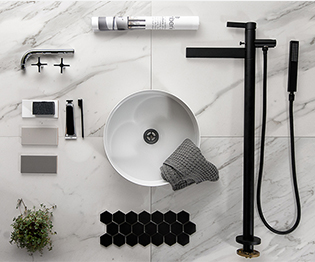
On October 19, the Urban Development Institute of Quebec granted the INOVA Award to Le Castelnau, a DevMcGill and TGTA project. This award, which aims to highlight Quebec's expertise in real estate development, is awarded to innovative projects that have had a significant impact on their community. Le Castelnau was honoured in the Multi-Residential Category, for projects in excess of $50 million. Céragrès is very happy to have contributed to this project by providing the ceramic for all condominiums.


Le Castelnau at a glance
From the project's onset in 2010, the promoter and all stakeholders, including the City of Montreal, set out to create a focal point for the revitalization of the Villeray neighbourhood.
The series of high-end condominiums is the product of the restoration of l'Institut des Sourds-Muets, a Beaux-Arts style building from the 1920s (phase 1), and the redevelopment of former factories (phases 2 to 4). The challenge was immense: blend the style of the heritage building with the look of the three industrial buildings, while ensuring that the end result integrates well with the neighbourhood. The restoration of the former Institut des Sourds-Muets placed certain constraints on developers: windows needed to be preserved, the number of floors had to remain the same and no balconies could be added to the facade.

A powerful impact on the entire neighbourhood
As DevMcGill Project Head Maxence Baratier stated, the impact of Le Castelnau goes far beyond its architecture. It stands out because it integrates seamlessly with the neighbourhood while marking a new era for the entire borough. In fact, development and revitalization in the neighbourhood has not stopped since the project began.

Backsplach: Link Wave
Ceragres: a key partner
Ceragres supplied the ceramic for the condos in all four phases. As illustrated by Éric Faille, Ceragres representative for the project, it was essential to find products that would integrate well with each building to preserve their integrity. For all phases, and specifically for the three former factories, ceramics were selected to reflect the unique look and history of the space.

Wall tiles: Bloc
Photo credits: DevMcgill

 Start over
Start over